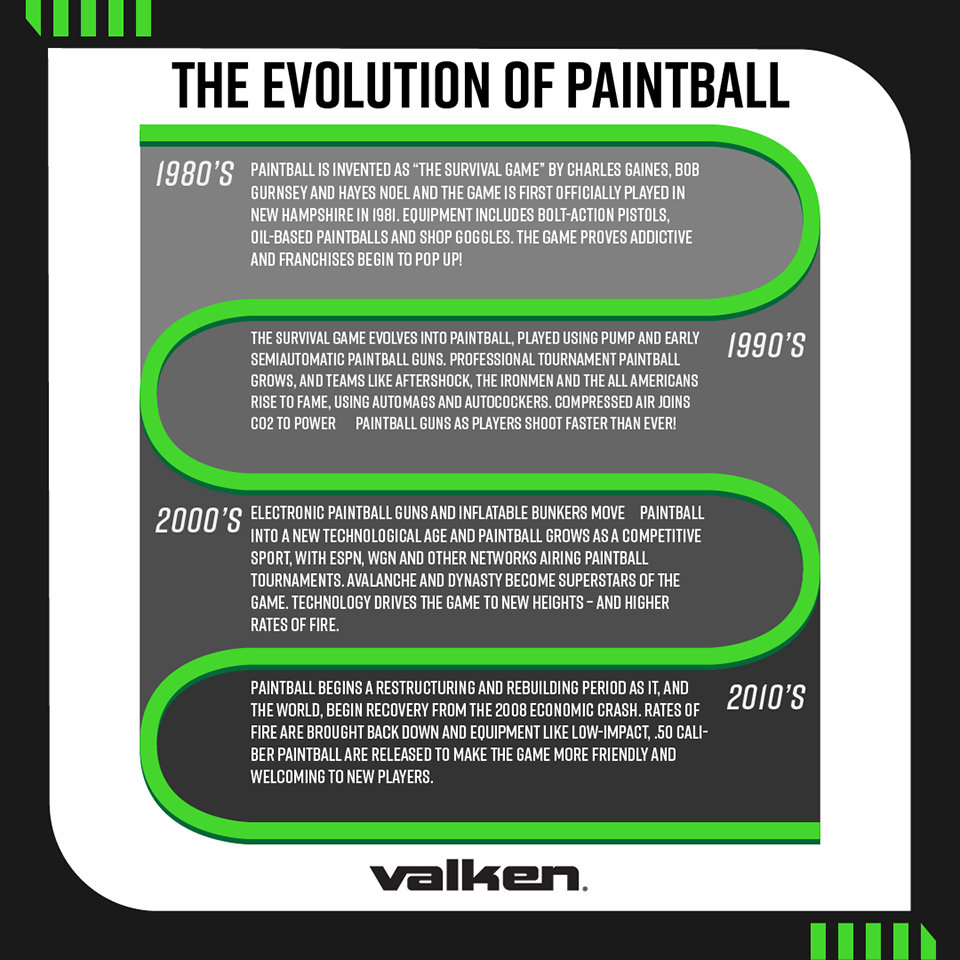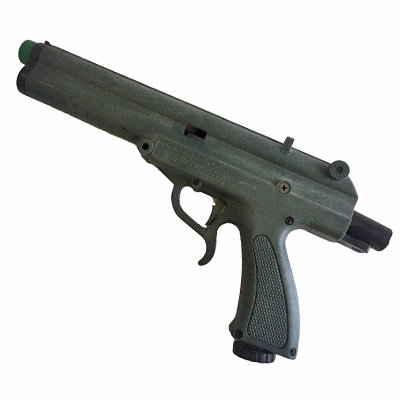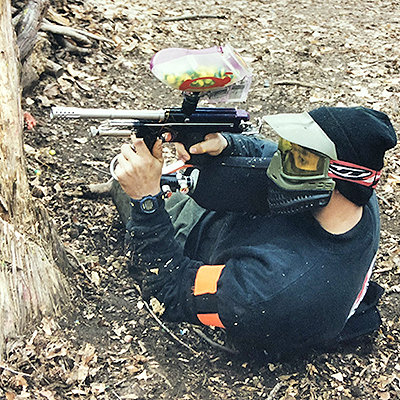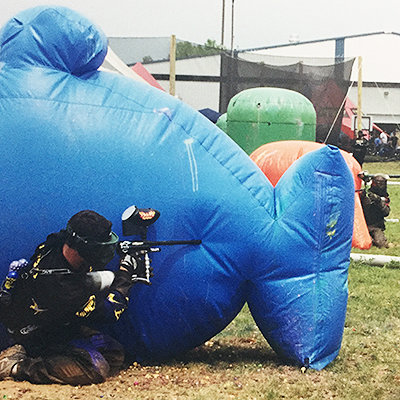The Evolution of Paintball
Posted by Josh Silverman on 9th Mar 2021
The Evolution of Paintball
The evolution of paintball is a remarkable story of technological innovation, adventure and the desire of a passionate group of people unwilling to simply wait and see what might come next, but to actively create it! Paintball has grown from a dozen players in the woods of New Hampshire in 1981 to a high-tech, adrenaline-packed action-adventure game and pro sport played around the world! What started with bolt-action pistols, shop goggles and oil-based paintballs that had to be cleaned with turpentine now features electronic paintball guns, biodegradable paintballs and advanced safety equipment making the game safer and more enjoyable than ever!

The Early Days
The Early Days The earliest days of paintball saw the game created by men like Charles Gaines, Hayes Noel and Bob Gurnsey, who packaged the concept as “The Survival Game” in the early 1980’s. This era saw the game played with basic, bolt-action paintball pistols powered by 12gram CO2 cartridges, shooting paintballs that contained oil-based paint that had been used to mark trees for forest service work. Eye protection, such as there was, consisted of shop goggles or shooting glasses. Players crept into the woods armed with Nelspot 007 bolt action pistols intent on eliminating opponents and capturing flags, roving across massive paintball fields acre-upon-acre in size, in games that lasted hours. Those who stumbled upon, or were introduced to, The Survival Game found the adrenaline rush was like nothing else in the world and the game began to grow, with Survival Game franchises popping up in territories around the United States!
Innovation Begins
It wasn’t long before that earliest group of paintball players, bitten by the bug and addicted to the adrenaline, began looking for ways to get an edge on their opponents once the game began. Players began tinkering in their garages and workshops, modifying existing paintball equipment and even building new gear and the arms race was on! Players tired of chewing up their fingers working the cocking bolt on their pistols fashioned pump handles and it wasn’t long before other players, with bloody fingers, saw them and wanted their own. Players looking to keep shooting while others reloaded added longer magazine tubes, and then inverted oil cans, to their paintball guns to hold more paintballs, and barrels got longer and honed internally to improve accuracy. Players added basic facemasks or face shields to their basic shop goggles to protect their faces, and it wasn’t long before “real” paintball goggles had been released by popular a popular motocross company, JT, in the mid-eighties.

Competition and Technology
For many, simply having a blast playing “The Survival Game” wasn’t enough – they wanted to know who the best was. Early paintball tournaments like the Air Pistol Open, the Masters and the earliest Paintball World Cup were promoted and teams from around the US, Canada and even England and Europe were brought together to compete and see who the best really was! With big money on the line and interest in the game growing rapidly, more companies, more players and more innovation arrived on the scene. Paintball guns moved from 12gram CO2 power to “constant air” fed from larger tanks, allowing hundreds of paintballs to be fired between refills rather than dozens, and tubes and oil cans were replaced by the first paintball “ammo box” loaders.

Semiautomatic Paintball Guns
Then it happened. Pump paintball guns suddenly came up against the first semi and fully-automatic paintball guns in the late 80’s and paintball firepower changed forever. Instead of rocking, cocking, pumping and firing, paintball players could load stripper clips into their Tippmann SMG-60 paintball gun and hit the field with a 7ounce CO2 tank instead of a pocket full of 12gram cartridges! It wasn’t long before other early semi-automatic paintball guns joined the Tippmann SMG and Tippmann 68 Special on the field and air tanks started to grow, from 7ounce models to 9, 12 and even 20-ounce CO2 tanks. Paintball hoppers grew as well, to models holding as many as 100 and 200 rounds! By the 90’s, paintball players were facing off against each other with high-tech semi-automatic paintball guns like the Tippmann Pro-Am, the Sheridan VM-68, the Airgun Designs Automag, the Autococker and the Illustrator, all shooting water-based .68 caliber paintballs that didn’t stain. Safety equipment had evolved to include full facemasks from companies like Vents, Scott and JT, keeping players safe along with chronographs to measure and regulate the velocity of the firing paintball guns, and the game continued to grow!
Out of the Woods
The woods, the ancestral home of paintball and the place where the first game and all the early tournaments were played, couldn’t hold paintball forever. Paintball was looking for widespread acceptance and many believed all that camouflage and “Survival Game” heritage needed a makeover to move us into the future. Speedball, paintball played on smaller, spectator-friendly arena-style fields using man-made cover, was invented and took off! Companies like JT offered bright-colored clothing in-place of camouflage and teams responded to the game beginning to look like a sport! Speedball quickly advanced into Hyperball – a speedball game played on futuristic-looking fields constructed from corrugated piping, and then to Sup’Air Ball, speedball played on fields using inflatable bunkers that could be set up anywhere! Paintball came out of the woods in a big way and the National Professional Paintball League began incorporating Hyperball and Air Ball into professional paintball tournaments. The Ironmen, Aftershock and the All Americans battled with Rage, the Palm Beach Predators and Bad Company, and paintball even found its way onto ESPN!
Electronic Paintball Guns
As paintball was gearing up to enter the new millennium, companies like Smart Parts and WDP changed paintball again, this time by adding solenoids, circuit boards, micro-switches and batteries to paintball guns. The electronic paintball gun put firepower in the hands of serious players that had never even been imagined before, enabling rates of fire to eclipse ten paintballs per second. Teams like the All Americans picked up Shockers and Avalanche and Dynasty, armed with Angels, moved to the top of the leaderboards! Compressed air, a new technology that powered paintball guns with regulated, high pressure air that had been developed through the 90’s, became the air power source of choice for these fast-firing paintball guns, and new loaders like the force-feed HALO were developed to keep up with the insane rates of fire that programmable electronic paintball guns to produce!
Modern Paintball
All these technological innovations, evolutions and revolutions has taken paintball to places the early pioneers of the game could never have dreamed of. What started in the woods the days of magazines, newspapers and VHS tapes has evolved through the creation of the Internet all the way to smart phones and social media, with new generations trying paintball in North America, Europe, Asia and Africa! Modern paintball offers something for almost anyone ready to get off the couch and get into the action, enjoying one of the safest games in the world that invites everyone, regardless of race, sex or nationality, to put on a mask, grab a paintball gun and have some fun!

